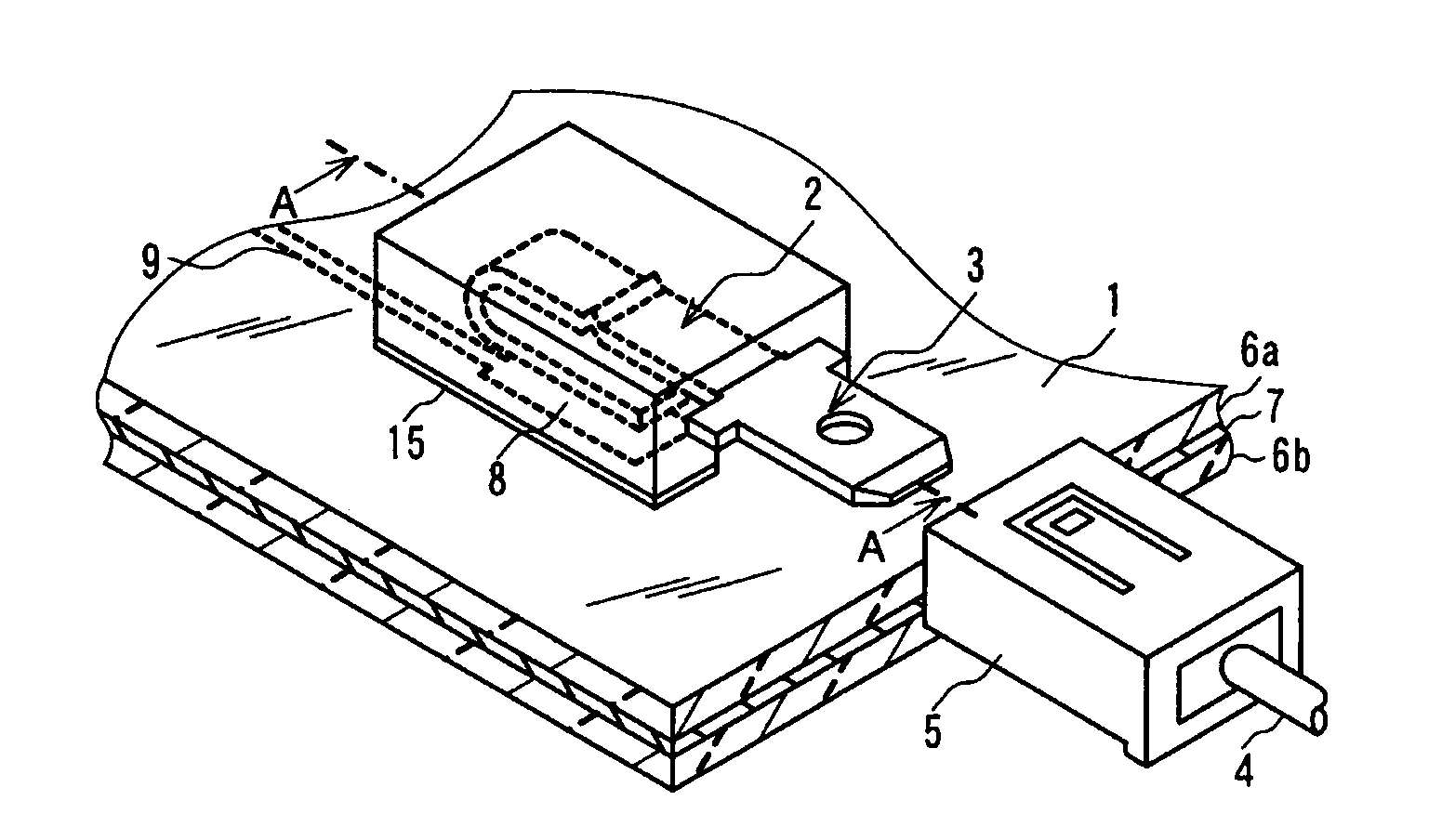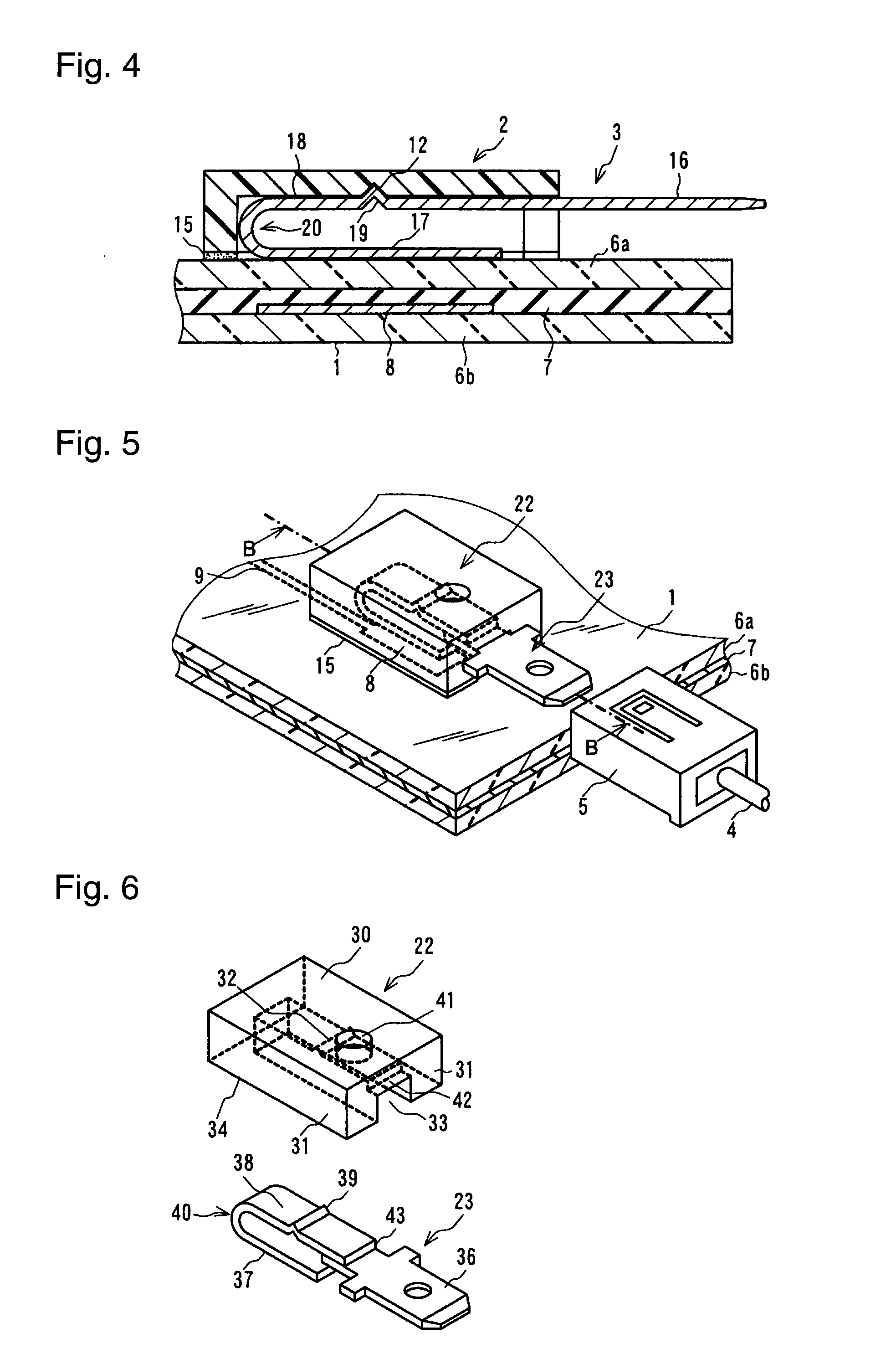Wire connection structure for laminated glass and laminated glass including such a wire connection structure
a technology of laminated glass and wire connection structure, which is applied in the direction of coupling contact members, coupling device connections, instruments, etc., can solve the problems of reducing the quality of laminated glass, and reducing the use of lead-containing solder. , to achieve the effect of stable electrostatic-capacitive coupling, simple structure and simplified production process
- Summary
- Abstract
- Description
- Claims
- Application Information
AI Technical Summary
Benefits of technology
Problems solved by technology
Method used
Image
Examples
Embodiment Construction
[0048] Now, embodiments of the present invention will be described in reference to the accompanying drawings.
[0049]FIG. 1 is a perspective view showing an embodiment of the present invention. FIG. 2 is an exploded perspective view of a housing and a terminal. FIG. 3 is a cross-sectional view taking along line A-A of FIG. 1. FIG. 4 is a cross-sectional view showing another embodiment, which is different from the embodiment of FIG. 1 in that an embedded electrode is located at a different position. Each of the embodiments of the present invention comprises laminated glass 1, a housing 2, a terminal 3 and a connector 5, which is located on the side of a lead wire 4 connected to an external instrument. The laminated glass 1 shown in FIG. 1 and FIG. 3 comprises two glass sheets 6a and 6b bonded together through an intermediate film 7 made of, e.g., polyvinyl butyral, and an electrode (hereinbelow, referred to as the “embedded electrode 8”) disposed between the two glass sheets 6a and 6b...
PUM
| Property | Measurement | Unit |
|---|---|---|
| electrically | aaaaa | aaaaa |
| conductive | aaaaa | aaaaa |
| strength | aaaaa | aaaaa |
Abstract
Description
Claims
Application Information
 Login to View More
Login to View More - R&D
- Intellectual Property
- Life Sciences
- Materials
- Tech Scout
- Unparalleled Data Quality
- Higher Quality Content
- 60% Fewer Hallucinations
Browse by: Latest US Patents, China's latest patents, Technical Efficacy Thesaurus, Application Domain, Technology Topic, Popular Technical Reports.
© 2025 PatSnap. All rights reserved.Legal|Privacy policy|Modern Slavery Act Transparency Statement|Sitemap|About US| Contact US: help@patsnap.com



